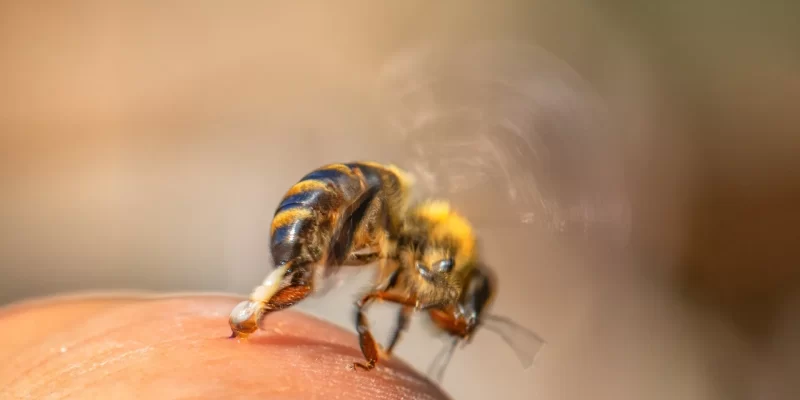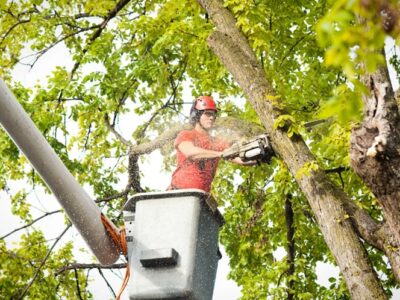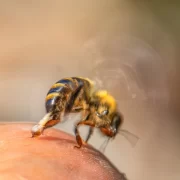Bees are often misunderstood. While many people associate them with painful stings and potential allergic reactions, bees also play a critical role in pollinating plants and supporting the environment. But when does a bee presence become a real danger? Are bees truly dangerous, or can you safely coexist with them? Let’s explore when to be cautious and when to let these helpful pollinators go about their business.
1. The Role of Bees in the Environment
Before diving into the risks, it’s important to understand just how valuable bees are:
- Pollination Powerhouses: Bees are responsible for pollinating about 75% of the world’s flowering plants and 35% of global food crops. Without them, our food supply would suffer dramatically.
- Biodiversity Support: Bees help maintain healthy ecosystems by supporting plant reproduction, which in turn provides food and habitat for other wildlife.
While bees are essential for the environment, there are times when their proximity to humans can create problems.
2. Are Bees Aggressive by Nature?
Contrary to popular belief, most bees are not aggressive and will not sting unless provoked. Here’s how some common types of bees behave:
- Honeybees: Generally gentle, honeybees will only sting to defend their hive. A single sting costs them their life, so they prefer to avoid confrontation.
- Bumblebees: These large, fuzzy bees are even less likely to sting unless directly threatened. They’re often seen buzzing around flowers and are safe to observe from a distance.
- Carpenter Bees: While they can cause property damage by boring into wood, carpenter bees are not aggressive. Males may hover near people but don’t have stingers.
- Africanized Honeybees (aka “Killer Bees”): This more aggressive species can be dangerous, as they are known to defend their hive vigorously and attack in large numbers. They’re more common in southern U.S. states.
3. When Are Bees Dangerous?
While bees are generally harmless when left alone, there are situations where they can pose a risk:
- Allergic Reactions: For people allergic to bee stings, even a single sting can cause a serious, life-threatening reaction called anaphylaxis. Symptoms include difficulty breathing, swelling of the face or throat, rapid heartbeat, and dizziness. If you or someone nearby shows these signs, seek emergency medical attention immediately.
- Multiple Stings: While a single sting is usually not harmful to most people, multiple stings—especially from disturbed hives—can be dangerous. Swarming bees may sting repeatedly if they feel their hive is under threat.
- Hives in High-Traffic Areas: If a bee hive is located near doorways, playgrounds, or other areas where people frequently gather, the risk of accidental stings increases. In such cases, it’s important to consider safe removal.
- Aggressive Bee Species: If you suspect the bees on your property are Africanized honeybees, it’s crucial to contact a professional immediately. These bees are more easily provoked and tend to attack in large numbers.
4. How to Stay Safe Around Bees
You don’t have to fear bees, but taking a few precautions can help you avoid unwanted encounters:
- Don’t Swat or Wave: Sudden movements can make bees feel threatened. If a bee is near you, stay calm and still, or move away slowly.
- Avoid Strong Scents: Bees are attracted to strong perfumes, scented lotions, and brightly colored clothing that resembles flowers.
- Cover Food and Drinks Outdoors: Sweet drinks and foods can attract bees. Keep them covered when dining outside.
- Seal Trash Bins: Bees are attracted to sugary residues in garbage, so keep bins tightly closed.
- Be Cautious Near Flowers: Bees are most active around flowering plants, so be mindful when gardening or walking in areas with lots of blooms.
5. What to Do If You Encounter a Hive
If you discover a hive on your property, your response depends on its location and your comfort level:
- Leave It Alone: If the hive is in a secluded area and the bees aren’t bothering anyone, it’s best to let them be. Bees are temporary residents, and many will move on after the season ends.
- Call a Professional: If the hive is near high-traffic areas or inside your home (e.g., in walls, attics, or chimneys), contact a professional pest control or bee removal service. They can safely and humanely relocate the hive.
- Avoid DIY Removal: Never attempt to remove a hive yourself, especially if you suspect aggressive bees. Disturbing a hive without proper equipment can result in multiple stings and serious injury.
6. How to Tell If You’re Dealing with Bees or Wasps
Sometimes, people mistake wasps or hornets for bees. This is important because wasps are more aggressive and can sting multiple times. Here’s how to tell the difference:
- Bees: Fuzzy, rounded bodies with muted colors (like brown and gold). They feed on nectar and pollen.
- Wasps/Hornets: Sleek, shiny bodies with brighter colors (like yellow and black). They are predators and scavengers, often found near trash or sugary drinks.
If you’re unsure what you’re dealing with, call a professional for identification.
Final Thoughts
Bees are essential to our environment and, in most cases, pose little to no threat if left undisturbed. However, they can become dangerous if they feel threatened, especially for those with allergies or when hives are located near areas of human activity. Understanding when to worry—and when to let bees be—can help you stay safe while supporting these vital pollinators.
If you encounter a hive in a problematic location, the best course of action is to contact a professional bee removal service. They can ensure the bees are relocated safely, protecting both your family and the environment. We recommend pest control in new york.












